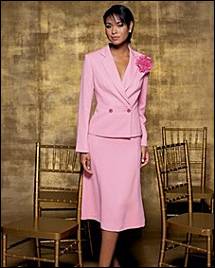This is a discussion after the release of the initial official Level 1 Learning Outcomes document
(ref: Level1_LearningOutcomes_official_Sep18_2012.doc)
Sep 18, 2012 from Patrick
Tata!
I have finished formatting our official Level 1 Learning Outcomes document!
This is based on our latest, Sep15,2012 edition of the Learning Outcomes.
The only "new" part is the preface; please let me know if there is any change needed there.
Details:
To save you from re-reading what you have read/edited before, I will highlight the major points here:
|
- Level 2, 3 materials are not included in this official document.
- I have added a "Creative Commons" (cc) symbol on the front page; this indicates
that the document is open-sourced, and can be freely disseminated and distributed.
- The Sep15,2012 Edition of the Level 1,2,3 Learning Outcomes is available under "Work to do" in our intranet.
It is derived from our Jul31,2012 Meeting Notes, as linked here:
https://www.IITTI.org/guru/meetingOutcomes_Jul31_2012.htm
In particular: Level 1 European dining will specify tines down.
Level 2 will add the regional variations detail.
|
Sep 19, 2012 from Lynne
Patrick and team- excellent work!
I have two questions.
1. In which category are we all placing dresses?
I have some thoughts and I flip flop a bit depending on the corporate culture.
But dresses are so widespread as business dress these days, we need to include all variations.
A suggestion might be below but I am looking for your input.
|
Formal dress: tailored dress and jacket, with fine denier tights, court shoes.
Semi formal dress: tailored dress with long sleeves, no tights in hot countries or in summer,
groomed legs and feet, court shoes.
Casual: short sleeved or sleeveless dress, lower cut dresses not showing cleavage, larger print dresses.
Hot countries and in summer, no tights, groomed legs and feet.
|
2. We have compiled quite a list of rules! I would like to add in some of these details to my curriculum. Are we allowed to use these guidelines?
Patrick's response (Sep19,2012):
Thanks for the encouragements! Regarding Lynne's Item #2, whether you can incorporate into your curriculum.
The answer is a definitive YES! BY ALL MEANS!
This is the benevolent and altruistic part of our initiative;
any image consultant can benefit from our labour at IITTI without charge.
I see that the whole industry could be better off with such standardization, which has been based on consensus.
Deborah's response (Sep19,2012):
Thank you for asking this, Lynne. This work will elevate our industry on so many important levels.
Thank you, Patrick, for the vision and wisdom you are providing.
Kimberly's response (Sep19,2012):
I agree [dresses and all its variations] would be good to add.
[For court shoes] I believe you mean pumps?
[For tights] do you mean sheer hosiery? Tights in Canada refer to opaque hosiery.
Many companies in Canada require hosiery even with semi formal dress.
Could we say - "hosiery may be optional in some companies? Refer to company dress policy".
Or something like that??
Sep 19, 2012 from Deborah
I do agree that dresses are here and have a place in the corporate culture.
The guidelines you have identified, Lynne, here in this email I would heartily support.
Do we need some language clarification regarding tights and court shoes?
Sep 19, 2012 from Riet
Tights are clear to me.
"Court shoes" is a term that I don't recognize. So yes I think clarification is a great contribution to more people.
Sep 19, 2012 from Lynne
Sorry sometimes I get US and UK terms muddled.
Court shoes are closed toed pumps or a simple business shoe with a heel. Tights are hosiery.
For formal business I mean that dresses should be worn with fine denier hose, not thick, opaque tights.
Sep 19, 2012 from Deborah
Thank you for the clarification, Lynne. That is what I assumed, but we may want to clarify for this purpose.
I love the international perspective we each provide!
Sep 19, 2012 from Riet
Is the way of indicating thickness of hosiery international?
We speak of 20 denier for very fine, 60 denier is almost opaque.
How is that in Asia?
Kimberly's response (Sep19,2012):
In Canada we don't generally talk about the denier - using the words sheer or opaque would be better understood.
Christina's response (Sep25,2012):
In Asia, this term is alien to most ladies.
However, local retailers carry a wide range of hosiery and many good brands indicate the denier.
At our corporate seminars, we would highlight this point to our participants.
I agree it is important for ladies to gain this knowledge.
Christina's response (Sep25,2012):
To add to comments on hosiery, in Asia, many ladies do consider wearing hosiery "old fashion".
Plus, our hot weather becomes the best excuse for ladies not to wear hosiery.
I agree that IITTI needs to set the standards of what's appropriate yet still in keeping with current times.
Sep 19, 2012 from Deborah
Again, I believe there is benefit in fully describing our terms.
We may want to include a glossary with appropriate definitions.
Tights in the US refer to a heavier opaque hose.
Sheer hosiery would be understood as appropriate.
I often get asked about tights.
Court shoes would indicate athletic shoes worn to play tennis or the like.
Closed toed pumps would be understood.
Kimberly's response (Sep19,2012):
Same in Canada.
Sep 19, 2012 from Lilian
What an excellent work, congratulations to all of you and specially to Patrick for making this happen!!.
I have 2 comments:
1. Regarding the name of the shoes: The most formal shoes (closed ones) we called them here and in Spain: "Queen style".
They look like the ones that are on the picture I found in google, maybe it can help to clarify.
2. In terms of types of blouses in the different categories of women's business dress,
do you think that we should talk about the blouse style and type of textiles, silk, cotton, rayon...?
Sometimes it's difficult to explain the categories, and talking about specific materials helps to clarify the idea.
For men it's easier.
Sep 23, 2012 from Patrick
I have made a summary of what are to be added to our Learning Outcomes.
Furthermore, I have added a "TERMS" section to clarify UK vs. US usage. Please add/edit to it as you see fit.
----------------- Begin summary -------------------
Formal dress
- tailored dress and jacket
- fine denier, "sheer" hosiery
- closed-toed pumps
Semi formal dress
- tailored dress with long sleeves
- no hosiery in hot countries or in summer
- groomed legs and feet
- closed-toed pumps
Casual
- short sleeved or sleeveless dress
- lower cut dresses not showing cleavage
- larger print dresses
- hot countries and in summer, no hosiery, groomed legs and feet
TERMS
Court shoes = In the UK, closed-toed pumps or a simple business shoe with a heel.
In the US, athletic shoes worn to play tennis.
Tights = In the UK, hosiery (20 denier for very fine, 60 denier is almost opaque).
In the US, tights refer to a heavier, opaque pantyhose, sheer hosiery refers to a fine-denier hose.
----------------- End summary -------------------
Sep 23, 2012 from Lynne
Thanks also for synthesizing the dress, leg wear and shoe information.
I think the terms opaque and sheer are very clear.
Could you also fit the three levels of dresses into your growing list of LOs.
Sep 23, 2012 from Lynne
I will check next week when I am in the UK on the denier number but I think it's 5-60.
Hosiery may be required in some industries with semi-formal dresses.
Deborah's response (Sep24,2012):
I agree. Many corporations I work with require high level employees to wear hosiery year round.
While no hosiery may be popular in fashion and appropriate in some areas, it is considered unprofessional in others.
Sep 23, 2012 from Lilian
I'm writing some suggestions below, just in case the group decide to consider.
----------------- Begin summary -------------------
Formal dress
- tailored dress and jacket
- blouse silk or silk like, or no blouse
- fine denier, "sheer" hosiery
- closed-toed pumps
Semi formal dress
- tailored dress with long sleeves
- blouse polyester, cotton, less expensive materials
- no hosiery in hot countries or in summer
- groomed legs and feet
- closed-toed pumps
Casual
- short sleeved or sleeveless dress
- blouse cotton, lycra top
- lower cut dresses not showing cleavage
- larger print dresses
- hot countries and in summer, no hosiery, groomed legs and feet
TERMS
Court shoes = In the UK, closed-toed pumps or a simple business shoe with a heel.
In the US, athletic shoes worn to play tennis.
Tights = In the UK, hosiery (20 denier for very fine, 60 denier is almost opaque).
In the US, tights refer to a heavier, opaque pantyhose, sheer hosiery refers to a fine-denier hose.
----------------- End summary -------------------
Sep 24, 2012 from Lynne
Lilian thanks for your useful input on blouses and fabrics.
This whole list on dresses and blouses and fabrics could be added to our original LOs.
I'm a bit hesitant to put polyester as a more casual category than silk as I have silk and quality poly and they look alike.
We all know what you mean but the general public might wonder what's wrong with their lovely poly blouse!
Perhaps we could put silk and quality manmade fabrics. Am I getting too complicated now?
Lilian's response (Sep24,2012):
I agree on the difference that should be made between these fabrics.
As Lynne suggests, maybe we can put silk and quality manmade fabrics in the same formal category and regular polyester and nylon for a more casual outfit.
Sep 25, 2012 from Christina
I agree with Lynne that silk and quality manmade fabrics are equally acceptable for a professional image.
However, that may not apply to jackets and full suits.
From our observation in Asia, polyester is by far the most popular fabric for suits.
People buy it because for its affordability and simply because most apparel retailers sell it.
Most executives don't know the difference between polyester and wool-blend suits till it is pointed out to them.
I may be biased here but very rarely do I find that polyester suits have quality feel and hang of a wool blend suit.
Do we need to get into such detail on this for the purpose of IITTI?
Patrick's response (Sep26,2012):
Not to worry! The existing Learning Outcomes has already stated the appropriate fabrics for business on page 11:
|
"Natural fabrics like wool, cotton and silk or natural fabrics with a small percentage of synthetic fibres."
|
Deborah's response (Sep25,2012):
I wonder if we should focus on basics for level one and add finer details for level two?
Christina, I agree that hosiery has been viewed as 'old lady' in fashion,
but it is considered part of top professional dress for conservative industries.
And, we are seeing the fashion industry bring back hosiery and I expect they will be seen as 'youthful' soon.
Deborah, I agree that we should keep any further details for Level 2.
I'm happy to hear that hosiery is making a come back;
not so much because I love them but because this will certainly help us make it more palatable to the ladies we see at our seminars.
By any chance, if you have any written trend news to validate this, please send that my way.
Sep 26, 2012 from Patrick
Hi Lilian,
Can you clarify the "no blouse" under Formal dress?
Lilian's response (Sep27,2012):
Hi Patrick:
It means just the jacket and the skirt or jacket and the slacks, no blouse under. I'm sending a picture of the idea.


Sep 28, 2012 from Lynne
Quick report from the UK.
Sheer tights/stockings/hose are being worn here by people in business,
now it's Autumn and colder.
The range is 7 denier to 60 denier.
40 and 60 denier are opaque and 7-20 are sheer (I have also seen 5
denier, ultra sheer on other trips and you can hardly see they are on
the leg).
So sheer and opaque are perfect categories.
People are eating mostly with a knife and fork, and formally, always
that way. I have also seen forks, tines up used for casual dining, and
for ease of eating food such as peas, mashed potatoes, rice. So we are
on track with Patrick's descriptions.
Sep 28, 2012 from Lilian
Thanks Lynn for all this valuable information and it's good to know about
knife and fork uses in a casual lunch in UK.
Regarding Stockings: Yesterday I received a mail from an Image Consultant
friend from Spain and they use the same concept that we are considering.
Here is the summary she sent me: Source Marife Rodriguez from Spain
|
We measure them in Denier, for summer time you will find:
8 Den - sheer
20 Den
40 Den
50 Den + thick
Microfiber type for Winter time.
15 Den - sheer
50 Den
70 Den + thick
|
Sep 28, 2012 from Kimberly
Although I understand the term reference 'denier',
here in Canada we don't really use that term as a general way to describe sheerness of hosiery.
We would more likely use the terms "sheer", "ultra sheer", "semi opaque", "opaque".
I am wondering if denier would be understood in other cultures.
To me it makes more sense to use descriptive words that could be easily translated from English into another language.
Like - sheer, etc.
Also, I agree with the comments about silk blouses.
Here in Vancouver, you are more likely to see polyester, nylon, rayon or another man made fabric,
even in the higher end stores.
Personally I love silk but it isn't always easy to find.
Especially in a colour and shape that is flattering and professional.
I also agree with the comments about tailored clothing i.e. suits:
wool is best for look, feel and durability.
And we are a slave to the limitations of the local stores.
We do see other fibres here for women's wear.
Sometimes (usually) it is not easy to find a quality wool suit,
or even one from natural fibres, especially for those of us who are speciality sized. i.e.
petite, plus or tall.
I always tell my clients to buy the best quality they can afford and try to educate them on how to tell better quality.
I am worried about being too rigid in the learning outcomes, especially in the first level.
Perhaps these details should be left for the standard or advanced level learning outcomes
where the participants would likely have a much larger budget.
I think this is a tricky one. For men it is much easier.
(See meeting notes of Oct19,2012 "Revisions to Level 1 Learning Outcomes" for the continuation.)



